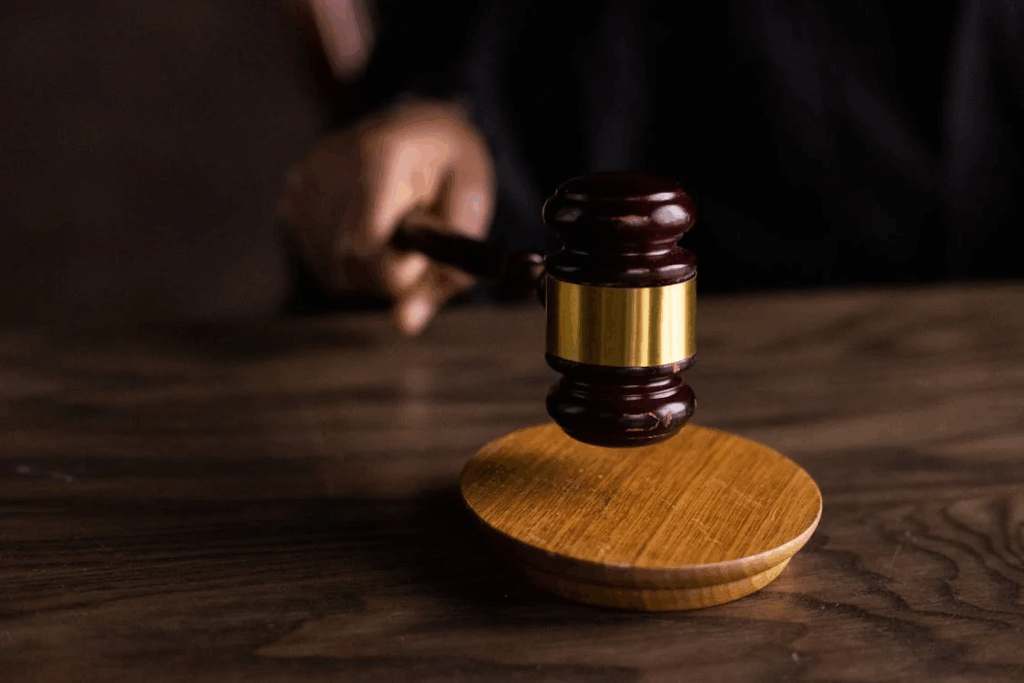Quick Summary
A car accident can put your personal assets at serious risk, especially if damages exceed your insurance limits. This guide shows you how to protect your assets after a car accident through practical, legal, and strategic steps. From avoiding costly mistakes to understanding what is truly protected, it helps you take control of your financial exposure. Feel free to explore our articles for more valuable asset protection guidance and tips.
Looking to Protect Your Assets from Claims after a Car Accident?
A car accident can put your assets at serious financial risk. Even if you’re not at fault, legal claims and medical expenses can quickly add up, jeopardizing your property, savings, and future income.
Many high-net-worth individuals assume their insurance provides enough protection. However, judgments can easily exceed policy limits, and personal wealth often becomes a target for legal claims. Without the right planning, your assets could be left exposed.
In this Blake Harris Law article, we outline how to protect your assets after a car accident through legal, financial, and strategic measures. You will learn what steps to take immediately, what structures offer the strongest protection, and how Blake Harris Law can help.
Why Listen to Us?
At Blake Harris Law, we have helped hundreds of clients protect their wealth from unexpected threats, including legal claims that follow car accidents. Our clients have trusted us for years, and we continue to provide invaluable advice tailored to each client’s post-accident claims situation.
As Tyler Oldenburg from Jacksonville, Florida shared on Google:
“Blake Harris Law is the most qualified, experienced law firm to handle all your asset protection needs. Without hesitation, I recommend Attorney Blake Harris for all matters related to keeping your property protected from lawsuits.”
His words reflect our clients’ confidence in our process, knowledge, and results.
Understanding Asset Risks Post-Accident
A car accident can expose your personal wealth to significant legal and financial risks. If the damages exceed your insurance coverage, your assets may be targeted to satisfy judgments.
This exposure arises from three primary areas:
- Financial Implications: Accidents often lead to substantial expenses, including medical bills, vehicle repairs, and a potential loss of income. These costs can quickly surpass insurance limits, placing your personal assets at risk.
- Liability: Being found at fault in an accident can result in lawsuits seeking compensation beyond your policy’s coverage. This legal responsibility can threaten your savings, property, and other assets.
- Risk Assessments: Without proper asset protection planning, individuals may unknowingly expose their wealth to creditors and claimants. Regular evaluations can identify vulnerabilities and inform protective strategies.
Recognizing these risks highlights the need for proactive asset protection. Taking preventive measures now can help secure your financial future and shield you from unexpected liabilities.
Why Asset Protection Matters After a Car Accident
Protecting your assets after a car accident offers several advantages:
- Shielding Personal Wealth: Proper asset protection can prevent the loss of your personal assets, such as savings and property, in case of lawsuits or claims exceeding insurance coverage.
- Mitigating Legal Risks: Establishing legal structures like trusts or LLCs can reduce exposure to personal liability and safeguard your assets from potential creditors.
- Ensuring Financial Stability: Asset protection strategies help maintain your financial position, preventing unforeseen accidents from derailing your long-term financial plans.
- Enhancing Negotiation Leverage: Demonstrating that your assets are protected can discourage frivolous lawsuits and encourage settlements within insurance limits.
- Maintaining Privacy: Certain asset protection tools can keep ownership details confidential, reducing the likelihood of being targeted in legal actions.
How to Protect Your Assets after a Car Accident
Step 1: Inform Emergency Services
After a car accident, call emergency services right away to address medical needs and create an official police report. This report plays a key role in resolving insurance or liability issues later on.
Stay at the scene and speak with the responding officers. Share only factual information, and avoid speculating or interpreting events, even if others pressure you to do so.
If you or anyone else is injured or suspects an injury, request medical attention immediately. On-site medical reports made shortly after the accident carry more credibility than delayed evaluations.
When speaking with first responders:
- Confirm names and badge numbers
- Request the report number and jurisdiction
- Avoid editorializing or assuming blame
- Stay consistent in your account of events
This step sets the legal foundation for any future asset protection efforts. Later claims or defenses may lack credibility without formal documentation from law enforcement and emergency personnel.
Step 2: Avoid Admitting Fault
What you say at the scene of an accident can significantly affect your financial liability. Even a simple apology might be seen as an admission of fault and used against you.
Avoid discussing fault with other drivers, witnesses, or anyone at the scene. Focus your conversations on emergency responders and your insurer, sticking to objective details such as the time, location, road conditions, and observable facts.
If questioned by police, keep your responses clear and concise. You are not obligated to guess or provide opinions about the cause of the accident. Just simply stick to the facts and avoid speculation.
When speaking after the accident:
- Do not say “I’m sorry” or “I didn’t see you”
- Avoid commenting on speed, distractions, or road mistakes
- Let your legal and insurance teams determine fault
Preserving neutrality helps limit your liability exposure. Once a fault is assigned, plaintiffs may seek assets beyond your insurance coverage. Staying silent on blame protects your legal and financial standing.
Step 3: Document the Accident Thoroughly
Accurate documentation is key to limiting liability and protecting assets after an accident. Photographs, records, and firsthand accounts help control the narrative and reduce reliance on other parties’ versions of events.
Here’s how you can collect adequate information to strengthen your case:
- Take clear photos from multiple angles. Capture vehicle positions, license plates, road signs, skid marks, and weather conditions. If possible, record brief video clips with narration.
- Secure contact details from all involved parties, including:
- Full name and phone number
- Driver’s license and plate numbers
- Insurance provider and policy number
- Eyewitness names and brief statements
- Once you have a copy of the police report, review it for accuracy. If anything is incorrect or missing, request a supplemental statement immediately.
- Get medical documentation, even for minor injuries. Insurance companies often dispute delayed or undocumented symptoms. A medical record from the same day carries more legal weight than one from a follow-up days later.
Proper documentation reduces your exposure by preserving objective facts. This minimizes reliance on conflicting testimonies and gives your legal team a defensible foundation should litigation arise.
Step 4: Notify Your Insurance Provider Promptly
Reporting an accident late can weaken your coverage and raise red flags during claims reviews. Contact your insurer as soon as possible, ideally within 24 hours of the incident.
- Before calling your insurer, prepare vital information like your policy number and coverage details, timeline of events, names of involved parties, police report number (if available), photos of the scene and damage, and any injuries reported.
- While contacting your provider, stick to factual, concise statements. Do not speculate, estimate damages, or discuss fault. Instead, rely on your documentation only and upload photographs, police reports, and medical records as evidence.
Insurers will often record phone calls and ask leading questions. Be prepared. Take notes on the questions asked and responses given. If you are unsure, say so without guessing.
Prompt notification allows your insurer to investigate early and may help contain your exposure within policy limits. Failure to report or inconsistent statements can lead to delays, denied claims, or gaps in coverage, all of which increase your personal risk.
Step 5: Consult with a Legal Professional
After an accident, legal counsel is highly recommended, particularly if there are injuries, property damage, or a risk of legal claims. A qualified attorney can help you understand your rights, responsibilities, and possible liabilities.
In addition to addressing immediate concerns, a legal professional can evaluate your financial exposure. This includes determining whether your current asset protection measures are adequate or if additional steps are needed.
Advanced asset protection planning may be necessary for individuals with significant assets, such as business owners or licensed professionals. This often involves creating legal structures that separate personal assets from potential liabilities.
When choosing a legal advisor, consider:
- Experience in Asset Protection: Look for a legal background focused on shielding assets from lawsuits and claims.
- Knowledge of Relevant Jurisdictions: Some strategies involve international elements; familiarity with these can strengthen protection.
- Customized Planning: A strong plan should match your financial profile and long-term goals.
Why Work with Blake Harris Law?
Blake Harris Law focuses exclusively on asset protection strategies. We assist clients in protecting real estate, bank accounts, investments, retirement funds, and other assets from lawsuits, including those arising from car accidents.
Our global network spans jurisdictions such as Belize, the Cayman Islands, the Cook Islands, Liechtenstein, New Zealand, Panama, St. Kitts and Nevis, and Switzerland, offering strategic options for those seeking added security.
By working with Blake Harris Law, you gain access to tailored strategies designed to help protect your assets, preserve your financial well-being, and reduce risk in the aftermath of an accident.
Step 6: Identify and Understand Protected Assets
After a car accident, it is important to understand which of your assets are protected by law. This knowledge helps you assess financial risk and make informed decisions about further protection.
In many states, specific asset types receive legal protection from creditors and legal judgments:
- Primary Residence: Homestead exemptions may protect your main home from forced sale, depending on state laws.
- Retirement Accounts: Plans such as 401(k)s and IRAs often receive protection, although the extent can vary by jurisdiction.
- Jointly Owned Property: Assets owned jointly, particularly between spouses, may be protected from claims against only one owner.
However, other assets, such as brokerage accounts, rental properties, and business interests, may not have the same protections and could be at risk in legal proceedings.
Blake Harris Law helps clients evaluate which of their assets are currently protected and which remain vulnerable. Our asset protection attorneys are always available to provide guidance on legal tools, including trusts, business entities, and other planning strategies, that can improve asset protection.
Since asset protection laws differ from state to state, it is important to consult a legal professional who can offer advice tailored to your circumstances. Blake Harris Law’s multi-jurisdictional presence and knowledge also come in handy here.
Identifying risks early after an accident and implementing the appropriate strategies can make a meaningful difference in protecting your financial future.
Best Practices to Consider When Protecting Your Assets After a Car Accident
- Coordinate with Your Insurance Provider: Engage proactively with your insurance company to understand the extent of your coverage and any potential gaps. This collaboration helps manage claims effectively and ensures your assets are not unintentionally exposed.
- Avoid Post-Accident Asset Transfers: Do not move or retitle assets after an accident. Such transfers may be viewed as fraudulent and reversed by a court, potentially increasing your liability and weakening your legal position.
- Engage in Strategic Settlement Negotiations: Enter settlement talks with a clear view of your exposure and asset protection. If opposing parties see that your assets are legally out of reach, they may be more inclined to settle within policy limits.
- Maintain Consistent Communication Records: Document every interaction related to the accident, including calls, emails, and written correspondence. Consistency in your records can support your defense and protect against misstatements or bad-faith claims.
- Review Asset Protection Plans Regularly: Review your asset protection structures at least annually. As laws or personal circumstances change, your strategy may need adjustments to remain effective and legally sound.
Protect What Matters Most After Your Car Accident
Protecting your assets after a car accident requires swift action, clear documentation, and strategic legal planning. While insurance offers some protection, high-net-worth individuals often face exposure beyond coverage limits. That is where Blake Harris Law can step in.
Blake Harris Law focuses exclusively on asset protection, including offshore trusts in the Cook Islands, Nevis, and Belize. Our team helps clients preserve wealth and limit liability with tailored legal strategies before and after unexpected events.
Schedule a consultation with Blake Harris Law to protect what matters most.




